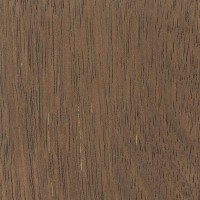 |
Common Name(s): Merbau, Kwila, Ipil
Scientific Name: Intsia spp. (I. bijuga, I. palembanica) Distribution: From East Africa to Southeast Asia and Australia; Tree Size: 130-200 ft (40-60 m) tall, 4-5 ft (1.2-1.5 m) trunk diameter Average Dried Weight: 51 lbs/ft3 (815 kg/m3) Specific Gravity (Basic, 12% MC): .68, .82 Janka Hardness: 1,840 lbf (7,620 N) Modulus of Rupture: 21,060 lbf/in2 (145.2 MPa) Elastic Modulus: 2,310,000 lbf/in2 (15.93 GPa) Crushing Strength: 10,650 lbf/in2 (73.4 MPa) Shrinkage: Radial: 2.9%, Tangential: 4.8%, Volumetric: 8.0%, T/R Ratio: 1.7 |
Color/Appearance: Has an orangish-brown color when freshly cut, which ages to a darker reddish-brown. Color between boards can be highly variable. There are also small yellow mineral deposits found throughout the wood, making it easier to separate from other lookalikes. (These yellow deposits are water-soluble and can cause staining.)
Grain/Texture: Grain is straight to interlocked. Texture is coarse, with a moderate natural luster.
Endgrain: Diffuse-porous; large to very large pores, very few; solitary and radial multiples; mineral deposits occasionally present, including conspicuous yellow deposits; narrow rays, normal spacing; parenchyma banded (marginal), paratracheal parenchyma vasicentric, aliform (winged or lozenge), and confluent.
Rot Resistance: Merbau is reported to be very durable, and resists both rotting and insect attack.
Workability: Glues and finishes well, though it can be difficult to saw due to gumming and dulling of teeth.
Odor: Has a unique smell when being sawed or sanded: which can also cause irritation and sneezing.
Allergies/Toxicity: Merbau has been associated with mild allergic reactions: most common is skin irritation and a runny nose. See the articles Wood Allergies and Toxicity and Wood Dust Safety for more information.
Pricing/Availability: Offered sporadically, lumber is usually sold in ample widths and lengths when available. Prices should be moderate for an imported hardwood.
Sustainability: This wood species is not listed in the CITES Appendices, but is on the IUCN Red List. It is listed as vulnerable due to a population reduction of over 20% in the past three generations, caused by a decline in its natural range, and exploitation.
Common Uses: Flooring, furniture, musical instruments, turned objects, and other specialty wood items.
Comments: This wood has excellent strength characteristics, along with excellent stability, making it ideally suited for use as wood flooring and other applications where strength is important.
None available.
 |
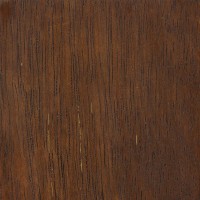 |
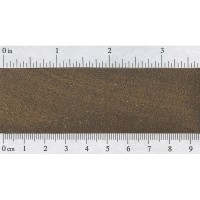 |
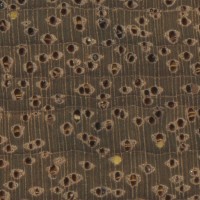 |
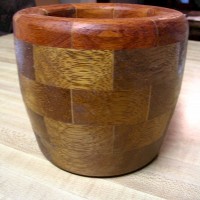 |





In Australia,you can find used pallets for reclaimed projects at your local Bunnings Pallet disposal section in their car park fairly regularly, it finishes beautifully
It is widely sold as cheap decking boards at hardware stores in Australia
I grew up in Papua New Guinea where this wood comes from. When I was in high school, I used this to make clocks. It is a beautiful wood, especially with a satin varnish, and easy to work with, though it does require sharp blades, however it will leave a clean cut which requires little sanding. I’ve been trying to get hold of more of this for years.
Goes by the name ‘Vengai’ in Tamil Nadu and South India. Used for roofing beams mostly. Raw wood runs reddish stain when wet during rains.
Pls give some more information as we r planning to use it for windows and doors also frames and whole for our home in north India.
Regards.
G S Sidhu
Can you tell more about the history of ‘vengai’ wood arrived in indian ports? HOw did it become commercially viable?
I am Feliks Ampung from Semarang Indonesia. I am working in Teak Garden Furniture Company.
I am glad finding this site.
Thanks a lot
Regards
Feliks Ampung
Ipil
In philippines they call it “Taal” if you are referreing to ipil-ipil then you are wrong, look for the scientific name.